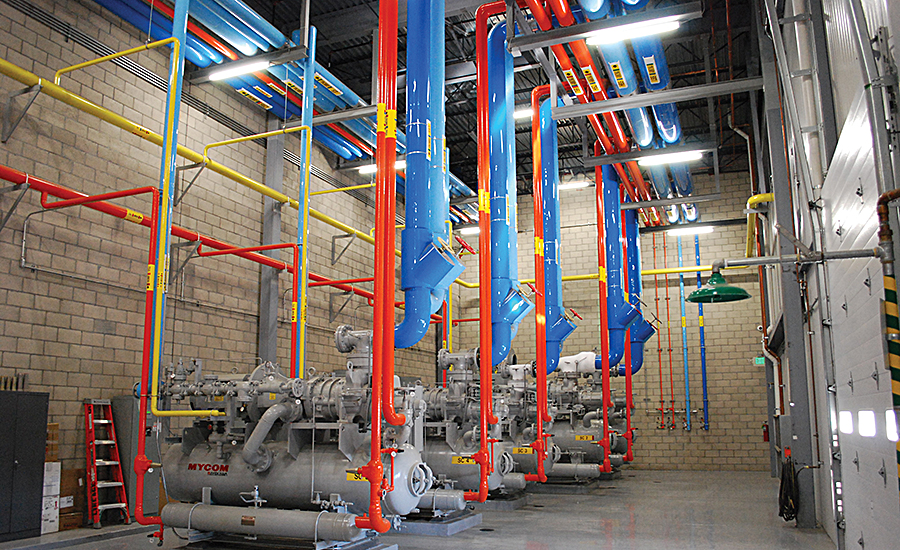Ammonia Piping Installation Engineering

Ammonia Piping Installation Standards For Pex Refrigerant line insulation installation for air conditioners, heat pumps, refrigeration equipment.
Hi Purnawan In general for high pressure system or piping containing hazardous material, anything above 2 inches should be butt welded. For 4' & 6' ammonia line I would say must be butt welded. Then you should gamma-ray test it for welding quality before you pressure test it with water of low chloride content (assuming you are using stainless steel pipe for ammonia)to up to one and a half times working pressure.
This is a general procedure without knowing full details of your situation. You should check ASME B31.3 for chemical plant piping. Paul RE: AMMONIA LINE (Petroleum) 10 Mar 03 08:06.
Ammonia piping typically falls under ASME B31.5, and is normally carbon steel. A53F pipe (usually junk to be avoided anyway), however, is expressly prohibited. If for no other reason, economics dictates butt welds in larger diamter pipe. 2' pipe is the typical upper threshold for socket welding. Many plants (most of my experience involves food processing operations) avoid hydrostatic testing of ammonia systems, and use pneumatic. This is because even trace amounts of moisture in these systems will cause operational problems due to ice crystals forming.
Ammonia Piping Labeling
RE: AMMONIA LINE (Mechanical) 14 Mar 03 16:35.
B31 Code for pressure piping, developed by, covers Power Piping, Fuel Gas Piping, Process Piping, Pipeline Transportation Systems for Liquid Hydrocarbons and Other Liquids, Refrigeration Piping and Heat Transfer Components and Building Services Piping. ASME B31 was earlier known as B31. B31.1 - 2012 - Power Piping Piping for industrial plants and marine applications. This code prescribes minimum requirements for the design, materials, fabrication, erection, test, and inspection of power and auxiliary service piping systems for electric generation stations, industrial institutional plants, central and district heating plants. The code covers boiler external piping for power boilers and high temperature, high pressure water boilers in which steam or vapor is generated at a pressure of more than 15 PSIG; and high temperature water is generated at pressures exceeding 160 PSIG and/or temperatures exceeding 250 degrees F. B31.2 - 1968 - Fuel Gas Piping This has been withdrawn as a National Standard and replaced by ANSI/NFPA Z223.1, but B31.2 is still available from ASME and is a good reference for the design of gas piping systems (from the meter to the appliance). B31.3 - 2012 - Process Piping Design of chemical and petroleum plants and refineries processing chemicals and hydrocarbons, water and steam.
This Code contains rules for piping typically found in petroleum refineries; chemical, pharmaceutical, textile, paper, semiconductor, and cryogenic plants; and related processing plants and terminals. This Code prescribes requirements for materials and components, design, fabrication, assembly, erection, examination, inspection, and testing of piping. This Code applies to piping for all fluids including: (1) raw, intermediate, and finished chemicals; (2) petroleum products; (3) gas, steam, air and water; (4) fluidized solids; (5) refrigerants; and (6) cryogenic fluids. Also included is piping which interconnects pieces or stages within a packaged equipment assembly. Related Topics.
Refrigeration Piping Installation
Pressure ratings of pipes and tubes and their fittings - carbon steel, stainless steel, plastic, copper and more. Piping codes and standards - ASME, ANSI, ASTM, AGA, API, AWWA, BS, ISO, DIN and more.